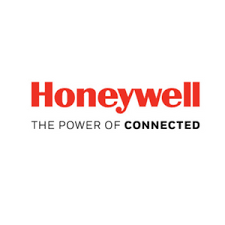Information
-
Audit Title
-
Client / Site
-
Conducted on
-
Prepared by
-
Location
-
Personnel
1. Employee/Personal Protection/Trench Integrity
-
1.1. Are employees protected from loose material which could fall into the trench?
-
1.2. Are emoployees provided with and are they required to wear proper safety equipment? (29CFR 1926.28(a))
-
1.3. If a hazardous atmosphere is identified, is ventilation provided or is respiratory protection in use? (29CFR 1926.651(g)(1)(ii))
-
1.4. Are walkways provided when employees or equipment are required to cross over excavation?
-
1.5. Are walkways that are six feet or more above lower levels of excavations equipped with gaurdrails?
-
1.6. Have hazardous objects been removed from the excavation area or blocked securely?
-
1.7. Is heavy equipment mounted on wooden mats to distribute weight?
-
1.8. Are damaged materials or equipment removed from service?
-
1.9. Is excavated material stored at least 2 feet from the edge of the excavation?
-
1.10. Has the soil type been classified?
-
1.11. Is the location of the trench marked by banners, barricades, or other signals?
2. Entrance/Exit Precautions
-
2.1. Is a safe means of egress (stairway, ladder, ramp) provided in a trench four feet or more deep?
-
2.2. Is a ladder within 25 feet from all employees working in a trench 4 feet or more deep?
3. Competent Persons
-
3.1. Does a competent person inspect the trench at the beginning of each day and throughout the day as needed?
-
3.2. Is the trench inspected by a competent person following any amount of rain?
4. Utility Involvement
-
4.1. Have the utility companies been notified of any excavation work scheduled and asked to establish the location of the underground utilities?
-
4.2. Has the location of all underground utility lines been identified?
5. Water Accumulation
-
5.1. Is the trench free of standing water or are adequate precautions in place against the hazards of water accumulation?
-
5.2. Is the proper water removal equipment operating under guidance of a competent person?
-
5.3. Are diversion ditches or dikes in place to prevent surface water from entering the trench?
6. Sloping and Benching
-
6.1. Is the sloping and benching system designed per OSHA requirements?
-
6.2. Is the aluminum hydraulic shoring system designed per OSHA requirements?
-
6.3. When a combination of sloping and shielding is used, does the shield extend 18 inches above the bottom slope of the excavation?
7. Hazardous Atmouspheres
-
7.1. Is the air quality in the trench tested if a hazardous atmosphere is suspected?
8. Emergency Response/First Aid
-
8.1. Is an emergency response program in place?
-
8.2. Is emergency rescue equipment readily available, in working order, and attended when in use?
9. Shoring and Shielding Systems
-
9.1. Are employees protected from cave-ins when entering and exiting a shield?
-
9.2. Are protective support systems installed in a manner that protects employees?
-
9.3. Are protective support systems dismantled from the bottom up?
-
9.4. Is the timber shoring system designed per OSHA requirements?
-
9.5. Is the excavation back filled as the protective system is dismantled?
-
9.6. Is the shielding system designed per OSHA requirements?
-
9.7. Are shield free from damage or defects?
10. Safety Inspections
-
10.1. HAVE CURRENT MISS UTILITY TICKET AND "STATUS" ON JOB SITE. <br> If no ticket indicate reason. If yes, give ticket number(s).
-
10.2. Reviewed miss utility ticket with employees and job site for proper marking done.
-
10.3. Haul roads adequate for conditions.
-
10.4. Traffic patterns set to eliminate accidents.
-
10.5. Back up alarms provided and operational?
-
10.6. Saw man using proper PPE.
-
10.7. Tree fall area clearly marked and kept clean.
-
10.8. Mobile equipment cab kept clean and free of loose material.
-
10.9. Equipment pre-operation inspections done to identify unsafe equipment?
-
10.10. Unsafe equipment tagged and made inoperable until repairs have been completed?
-
10.11. Seat belts in use on all mobile equipment, except those without ROPS.
-
10.12. Tracks/Sprockets cleaned as needed.
11. Inspections/Slings
-
11.1. Are slings, fastenings and attachments inspected for damage or defects by a competent person each day before use?
12. Synthetic Web Slings
-
12.1. Are all slings marked or coded to show the rated capacities for each type of hitch and type of synthetic web material?
13. Portable Metal/Fiberglass Ladders
-
13.1. Are ladders maintained in good usable condition at all times?
14. Personal Protective Equipment (PPE)
-
14.1. Are all employees required to use personal protective equipment as needed?
-
14.2. Does it fit properly?
15. Equipment/Supplies
-
15.1. Do you have first aid kits easily accessible to each work area, with necessary supplies available, periodically inspected and replenished as needed?
16. Flammable/Combustable containers
-
16.1. Are flammable liquids, such as gasoline, kept in an approved safety can?
-
16.2. Are flammable liquids kept in approved safety cans labeled?
Additional Comments
-
Enter additional comments
Subcontractors Onsite? If yes, write Subcontractors Company names.
-
Subcontractors Onsite?
Sign Off
-
On site representative. Mike Offutt
-
Auditor's signature












